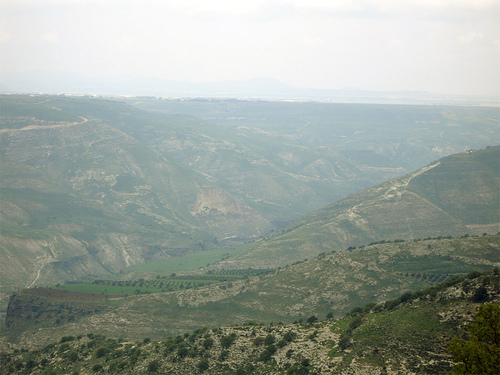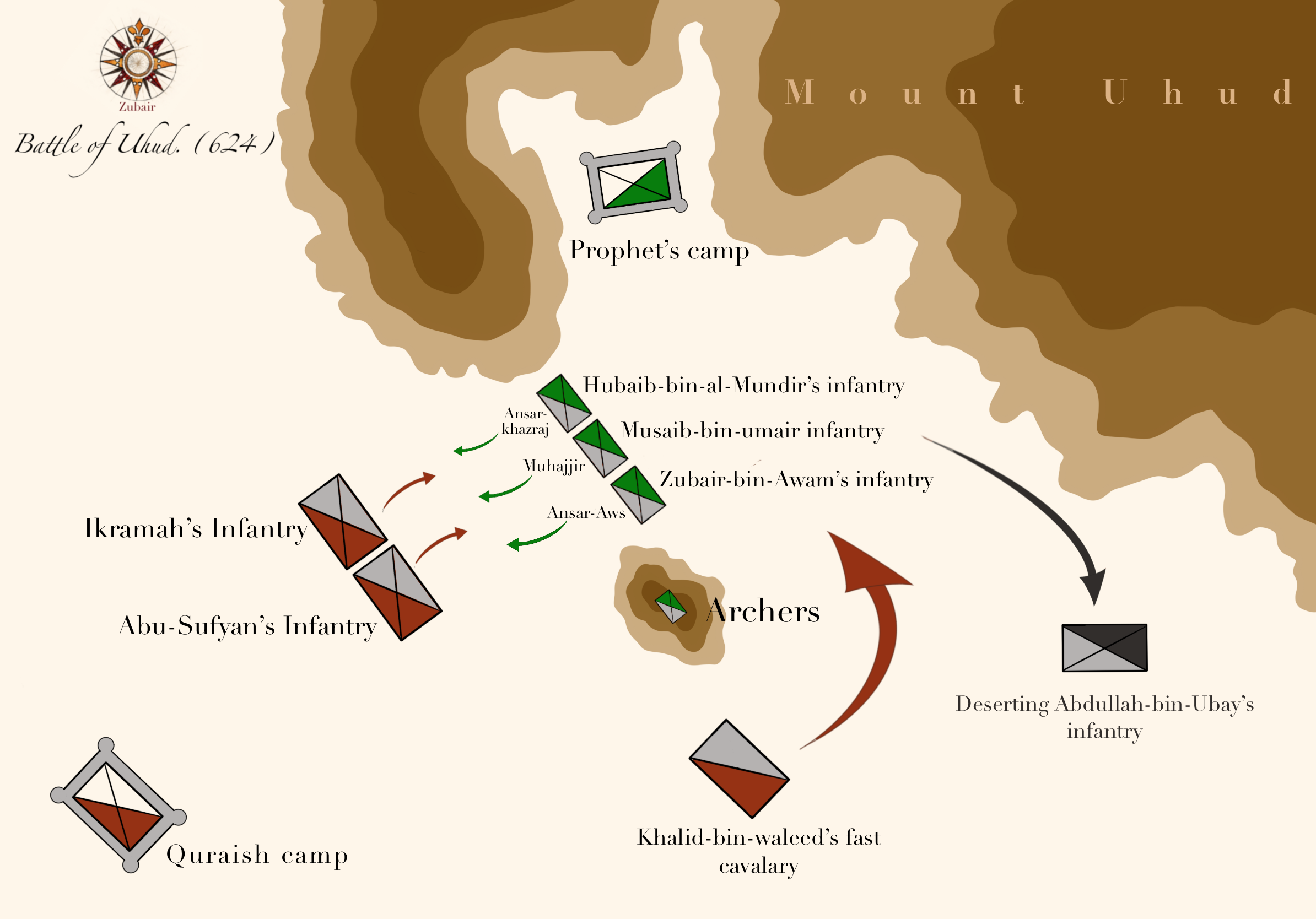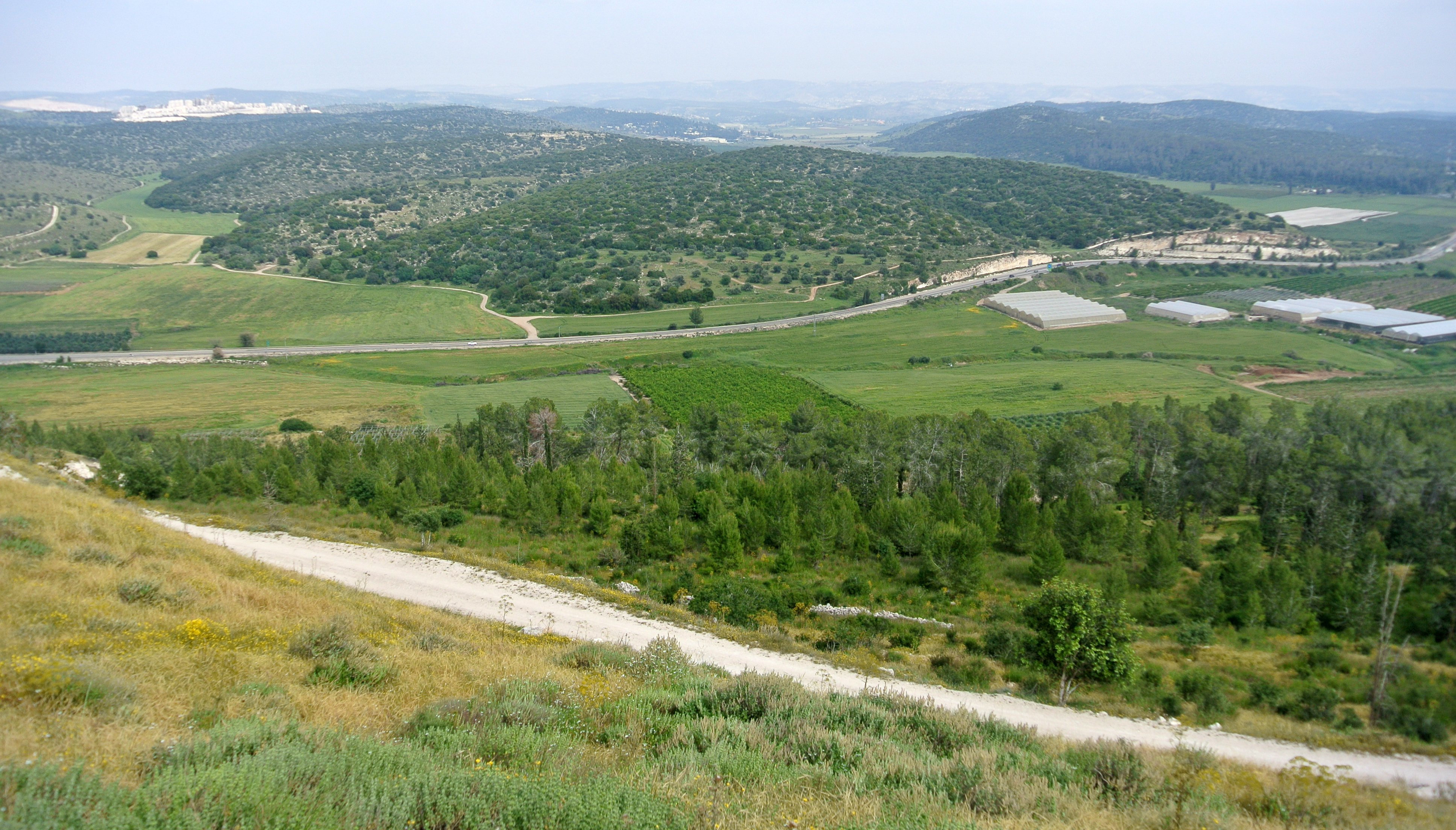|
Ajnadayn
The Battle of Ajnadayn () was fought in July or August 634 ( Jumada I or II, 13 AH), in a location close to Bayt Jibrin in Palestine; it was the first major pitched battle between the Byzantine (Roman) Empire and the army of the Arab Rashidun Caliphate. The result of the battle was a decisive Muslim victory. The details of this battle are mostly known through Muslim sources, such as the ninth-century historian al-Waqidi. Sources Regarding the primary sources, there is an absence of any of Byzantine provenance; possibly, according to Walter Kaegi, because what Byzantine material exists may conflate the battle with other Byzantine defeats, such as Dathin and Yarmouk. The earliest source appears to be an entry in the Frankish ''Chronicle of Fredegar'', compiled in 658-660, unless this is a possible interpolation. Background According to David Nicolle, the Rashidun army left the capital Medina probably in the autumn of 633, but possibly at the beginning of 634. They first enga ... [...More Info...] [...Related Items...] OR: [Wikipedia] [Google] [Baidu] |
Abu Ubayda Ibn Al-Jarrah
ʿĀmir ibn ʿAbd Allāh ibn al-Jarrāḥ (; 583–639), better known as Abū ʿUbayda () was a Muslim commander and one of the Companions of the Prophet. He is mostly known for being one of the ten to whom Paradise was promised. He was commander of a large section of the Rashidun Army during the time of the Rashid Caliph Umar and was on the list of Umar's appointed successors to the Caliphate, but died during the Plague of Amwas in 639 before Umar. Ancestry and early life Abu Ubayda belonged to the al-Harith ibn Fihr clan, also called the Balharith, of the Quraysh tribe. The clan was settled in the lower quarter of Mecca, a town in the Hejaz (western Arabia) and home of the Quraysh. During the pre-Islamic period (pre-620s), the Balharith were allied to the Banu Abd Manaf (the ancestral clan of the Islamic prophet Muhammad) in the Mutayyabun faction, against the other Qurayshite clans headed by the Banu Abd al-Dar. Abu Ubayda's father Abd Allah was among the chiefs of th ... [...More Info...] [...Related Items...] OR: [Wikipedia] [Google] [Baidu] |
Aretion
Aretion () was a Byzantine governor of Jerusalem during the reign of Heraclius (), and a general in the Arab–Byzantine wars. He is described by al-Tabari as "the most cunning of the Byzantines, the most far-sighted, and the most harmful". Name Since Aretion is not easily identifiable with anyone attested in Byzantine sources, his original Greek name is unknown. Most Arab sources give his name as "Arṭabūn" ( أرطبون), with a few (like Abu 'l Mahasin and Al-Waqidi) instead calling him "Areṭîūn" (ارطيون). Hendrik Arent Hamaker translated the latter into Latin as "Aretion". Alfred J. Butler believed that "Aretion" was the correct form and "Artabun" was a corruption. An alternate translation is " Artabanus". However, some historians (such as Michael Jan de Goeje) believe that "Artabun" may not be a name at all, but rather a corruption of the Roman title '. This allows Aretion to be identified with other attested figures. Walter Kaegi believed he "may be identic ... [...More Info...] [...Related Items...] OR: [Wikipedia] [Google] [Baidu] |
Amr Ibn Al-As
Amr ibn al-As ibn Wa'il al-Sahmi (664) was an Arab commander and companion of Muhammad who led the Muslim conquest of Egypt and served as its governor in 640–646 and 658–664. The son of a wealthy Qurayshite, Amr embraced Islam in and was assigned important roles in the nascent Muslim community by the Islamic prophet Muhammad. The first caliph Abu Bakr () appointed Amr as a commander of the conquest of Syria. He conquered most of Palestine, to which he was appointed governor, and helped lead the Arabs to decisive victories over the Byzantines at the battles of Ajnadayn and the Yarmuk in 634 and 636. Amr launched the conquest of Egypt on his own initiative in late 639, defeating the Byzantines in a string of victories ending with the surrender of Alexandria in 641 or 642. It was the swiftest of the early Muslim conquests. This was followed by westward advances by Amr as far as Tripoli in present-day Libya. In a treaty signed with the Byzantine governor Cyrus, Amr guar ... [...More Info...] [...Related Items...] OR: [Wikipedia] [Google] [Baidu] |
Dhiraar Ibn Al-Azwar
Dhirarr ibn al-Azwar Al-Asadi () also spelled as Diraar or Dirarr (original name Diraar ibn Malik), was a skilled warrior since before the time of Islam who participated in the Early Muslim conquests and a Sahabah, companion of the Islamic prophet Muhammad. Dhiraar was known to his tribe as al-Azwar. Dhiraar was feared by the Byzantine army and was given the nickname ''The barechested Warrior'' or ''The barechested Champion'' for his tendency to fight without armor or upper garments. Diraar mostly known for killing three dozen enemy commanders and champions in the Battle of Ajnadayn, blocking the enemy retreat in the Battle of Yarmouk, and killing more than a hundred soldiers single handedly in the siege of Oxyrhynchus Bahnasa. Diraar was a member of the elite Rashidun cavalry unit and also a Mubarizun, dueling specialist of the Rashidun Army operating mostly under the famous general Khalid ibn al-Walid, who trusted him in various tasks during Ridda wars, Muslim conquest of the ... [...More Info...] [...Related Items...] OR: [Wikipedia] [Google] [Baidu] |
Khalid Ibn Al-Walid
Khalid ibn al-Walid ibn al-Mughira al-Makhzumi (; died 642) was a 7th-century Arabs, Arab military commander. He initially led campaigns against Muhammad on behalf of the Quraysh. He later became a Muslim and spent the remainder of his career serving Muhammad and the first two Rashidun caliphs: Abu Bakr and Umar. Khalid played leading command roles in the Ridda Wars against rebel tribes in Arabia in 632–633, the Muslim conquest of Persia#First invasion of Mesopotamia (633), initial campaigns in Sasanian Iraq in 633–634, and the Muslim conquest of the Levant, conquest of Byzantine Syria in 634–638. As a horseman of the Quraysh's aristocratic Banu Makhzum clan, which ardently opposed Muhammad, Khalid played an instrumental role in defeating Muhammad and his followers during the Battle of Uhud in 625. In 627 or 629, he converted to Islam in the presence of Muhammad, who inducted him as an official military commander among the Muslims and gave him the title of (). During th ... [...More Info...] [...Related Items...] OR: [Wikipedia] [Google] [Baidu] |
Rashidun Caliphate
The Rashidun Caliphate () is a title given for the reigns of first caliphs (lit. "successors") — Abu Bakr, Umar, Uthman, and Ali collectively — believed to Political aspects of Islam, represent the perfect Islam and governance who led the Muslim community and polity from the death of the Islamic prophet Muhammad (in 632 AD), to the establishment of the Umayyad Caliphate (in 661 AD). The reign of these four caliphs is considered in Sunni Islam to have been "rightly-guided", meaning that it sunnah, constitutes a model to be followed and emulated from a religious point of view. This term is not used by Shia Muslims, who reject the rule of the first three caliphs as illegitimate. Following Muhammad's death in June 632, Muslim leaders debated who Succession to Muhammad, should succeed him. Unlike later caliphs, Rashidun were often chosen by some form of a small group of high-ranking companions of the Prophet in () or appointed by their predecessor. Muhammad's close companion A ... [...More Info...] [...Related Items...] OR: [Wikipedia] [Google] [Baidu] |
Shurahbil Ibn Hasana
Abū ʿAbd Allāh Shuraḥbīl ibn Ḥasana () was one of the earliest Muslim converts, ''sahaba'' (companion of the Islamic prophet Muhammad) and a key commander in the Rashidun army during the Muslim conquest of the Levant. Early life Shurahbil's father was a certain Abd Allah ibn Mu'ta ibn Amr, a member of the Arab tribe of Kinda. Shurahbil was named after his mother Hasana. Through his mother's later marriages, he was connected to the Qurayshi clans of Zuhra and Jumah of Mecca. Shurahbil was an early convert to Islam and is counted among the ''sahaba'' (companions) of the Islamic prophet Muhammad. He was part of the second Muslim migration to Abyssinia from Mecca to escape the persecution of the pagan Quraysh. Military career Battles in Muhammad's lifetime and the Ridda wars Shurahbil later took part in the raids against the pagan Arabs during the lifetime of Muhammad. After Muhammad died in 632, many of the Arab tribes that had embraced Islam left the faith and defected f ... [...More Info...] [...Related Items...] OR: [Wikipedia] [Google] [Baidu] |
Yazid Ibn Abi Sufyan
Yazid ibn Abi Sufyan ibn Harb ibn Umayya (; died 639) was a leading Arab Muslim commander in the conquest of Syria from 634 until his death in the plague of Amwas in 639. Following the capture of Damascus around 635, he was placed in command of the city and its military district. After the death of the overall Muslim commander of Syria, Abu Ubayda ibn al-Jarrah, in 639, he was appointed by Caliph Umar () the governor of Damascus, Jordan and Palestine. Yazid was the elder half-brother of Mu'awiya ibn Abi Sufyan, who was appointed as his successor over Damascus and Jordan by Umar and gradually became governor over all of Syria. Early life Yazid was a son of Abu Sufyan, a chief of the Quraysh tribe of Mecca, belonging to the Umayya branch of its Banu Abd Shams clan. His mother was Zaynab bint Nawfal (also identified as Zaynab bint Hashim) of the Kinana tribe. He embraced Islam with his father and paternal half-brother Mu'awiya when the Islamic prophet Muhammad captured ... [...More Info...] [...Related Items...] OR: [Wikipedia] [Google] [Baidu] |
Ubadah Ibn Al-Samit
'Ubadah ibn al-Samit ( ) was a companion of Muhammad and a well-respected chieftain of the Ansar tribes confederation. He participated in almost every battle during Muhammad's era. His official title, according to Muslim scholarly tradition, was 'Ubadah ''bin Saamit al-Ansari al-Badri'' () for his actions at the Battle of Badr. He served under the first three Rashidun caliphs in the Muslim conquest against the Byzantines. The conquest of Cyprus marked 'Ubadah as one of the Rashidun army's most successful military commanders. He participated in more than seven large scale military campaigns before ending his career as a Qadi in the Holy Land. In later years he assisted the then-governor and later Umayyad caliph Mu'awiya. 'Ubadah served as the Qur'anic teacher of Suffah and the Mufti and judge of the Rashidun caliphate, along with matters of converting subdued populations and building Mosques, such as the Mosque of Amr ibn al-As in Egypt and the Bazaar Congregational mosque in H ... [...More Info...] [...Related Items...] OR: [Wikipedia] [Google] [Baidu] |
Theodore (brother Of Heraclius)
Theodore (, ; fl. c. 610 – 636) was the brother (or half-brother) of the Byzantine emperor Heraclius (), a ''curopalates'' and leading general in Heraclius' Byzantine-Sassanid War of 602–628, wars against the Persians and against the Muslim conquest of Syria, Muslim conquest of the Levant. Life He was the son of the general and exarch of Africa Heraclius the Elder, and is usually regarded as the brother (although John of Nikiu suggests him to be the half-brother) of Heraclius. Soon after Heraclius' overthrow of the emperor Phocas (r. 602–610), Theodore was appointed to the crucial post of ''curopalates'', controlling the palace administration, which at the time was ranked second in importance only to the imperial office itself.Martindale, Jones & Morris (1992), p. 1278 In 612, after the deposition and imprisonment of the ''magister militum per Orientem'' Priscus (magister militum), Priscus, command of his troops was assumed by Theodore and Philippicus (comes excubitorum), ... [...More Info...] [...Related Items...] OR: [Wikipedia] [Google] [Baidu] |
Early Muslim Conquests
The early Muslim conquests or early Islamic conquests (), also known as the Arab conquests, were initiated in the 7th century by Muhammad, the founder of Islam. He established the first Islamic state in Medina, Arabian Peninsula, Arabia that expanded rapidly under the Rashidun Caliphate and the Umayyad Caliphate, culminating in Muslim rule being established on three continents (Asia, Africa, and Europe) over the next century. According to historian James Buchan: "In speed and extent, the first Arab conquests were matched only by those of Alexander the Great, and they were more lasting." At their height, the territory that was conquered by the Arab Muslims stretched from Iberian Peninsula, Iberia (at the Pyrenees) in the west to Indian subcontinent, India (at Sind (caliphal province), Sind) in the east; Muslim control spanned Sicily, most of the Middle East and North Africa, and the Caucasus and Central Asia. Among other drastic changes, the early Muslim conquests brought about ... [...More Info...] [...Related Items...] OR: [Wikipedia] [Google] [Baidu] |
Valley Of Elah
The Valley of Elah, Ella Valley ("Valley of the terebinth"; from the ), or Wadi es-Sunt (), is a long, shallow valley in the Shephelah area of Israel. It is best-known from the Hebrew Bible incident where David defeated Goliath ( 1 Samuel 17:2 and 19). It is home to several important archaeological sites, including those identified as the ancient towns of Azekah and Sokho (1 Samuel 17:1). Rising from the valley on its extreme southeast end lies the hilltop ruin Adullam, and on its north lie the ruins of the ancient fortress city of Khirbet Qeiyafa, which is identified with the ancient town of Shaaraim mentioned in 1 Samuel 17:52. The valley is named after its indigenous trees: in Hebrew after the large and shady terebinth trees (''Pistacia terebinthus'' and '' P. palaestina''), and in Arabic for the white acacia trees ('' Faidherbia''). On the west side of the valley, near Socho, there is a huge and ancient terebinth, in height with a trunk in circumference and a canopy at ... [...More Info...] [...Related Items...] OR: [Wikipedia] [Google] [Baidu] |








